Bob’s been in touch with his weathered HO scale locomotives:
“Hi Al, it’s Bobby again. I just wanted to share my GP38-2.
It’s my first major weathering job on an engine. I think it came out somewhat good but please let me know what you think.
I started by taking the model apart piece by piece, guardrails, cab, and trucks. I needed to take it all apart anyway because I’m going to make it DCC. Then started to make patches where paint had come off. After doing that to the engine body, trucks, and tank, I air brushed some really thine refer white and made it look faded. Then it was on to the rust on body and trucks.
After all was done, I used rail tie brown, really thinned, and sprayed the model and trucks again. I sealed it all with a dull coat and sort of put it back together because I’m waiting on the sound decoder. I’ll send you a video of the engine when that gets installed. Until next time hope you enjoy my weathered HO scale locomotives.
Bobby”
Now on to Hall of Fame member, Mark:
“Hi Al. I trust all is well with you. Here is another tip in the area of modeling “small vignettes” one at a time to relieve frustration of being overwhelmed by the big picture.
Not every small scene needs to be elaborate, time consuming or expensive. This “fire scene” was created in about an hour last night after dinner. Total cost (less the figures and ‘dozer) was about .50 cents for glue and paint.
There was an uninteresting, mostly bare, area above a tunnel that needed something. First you create the “lore” or reason for the scene. In this case “Brush fire from a lightning strike above Tunnel 6 on Eagle Mt., just north of Camp Carroll. Fire crew knocked it down with the help of D&RGW fire car. Able to get the crew and a ‘dozer in on the fire road. Minimal damage, no injuries.”
The Woodland Scenics figures are available on ebay, the rocks are from my garden, the “burnt” trees are the dead clippings from a garden plant called a “Foxtail” simply spray painted from a cheap can of brown spray paint, the rest of the deadwood are just clippings from the garden.
The inspiration to model this scene is to commemorate, in a very small way, all of the ongoing efforts by the fire fighters in my native state of California which at this very time going through one of the worst fire seasons in California history. So this is just my small effort to tip my hat and say “thanks for all you do” to firefighters everywhere.
Thanks for the encouraging comments!
Mark”
Big thanks to Bobby for sharing his weathered HO scale locomotives. I think I may add this one to the Beginner’s guide to go with all the other weathering tips. There’s quite a stack of them now.
That’s all this time folks. Don’t forget the ebay cheat sheet. Still going strong.
Keep ’em coming.
Best
Al
PS More HO scale train layouts here if that’s your thing.
Need buildings for your layout? Have a look at the Silly Discount bundle.
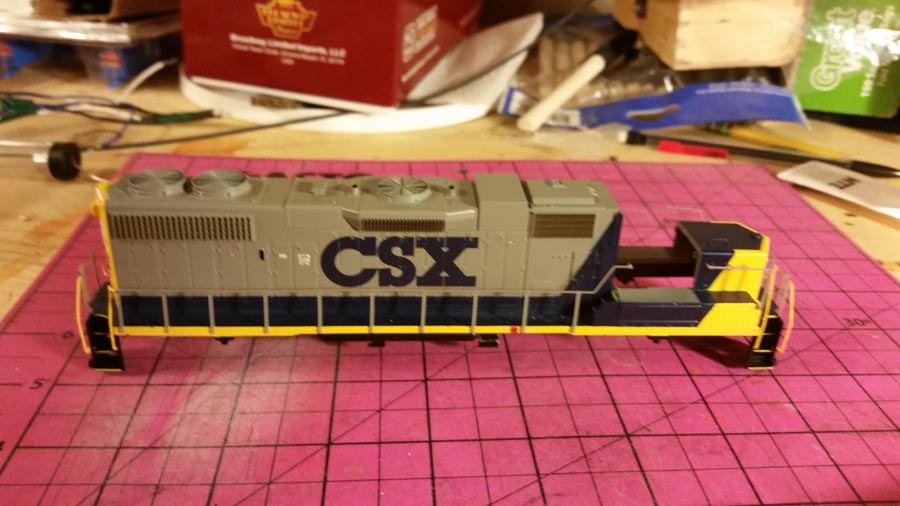
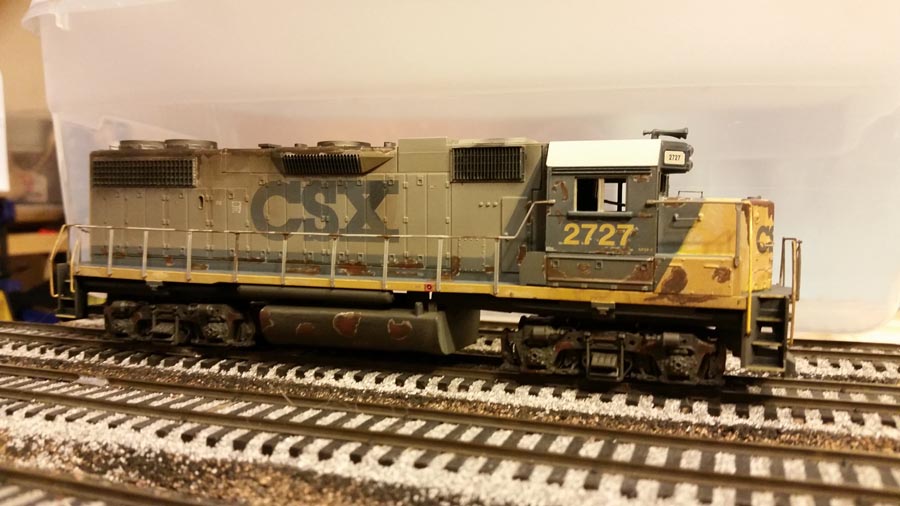
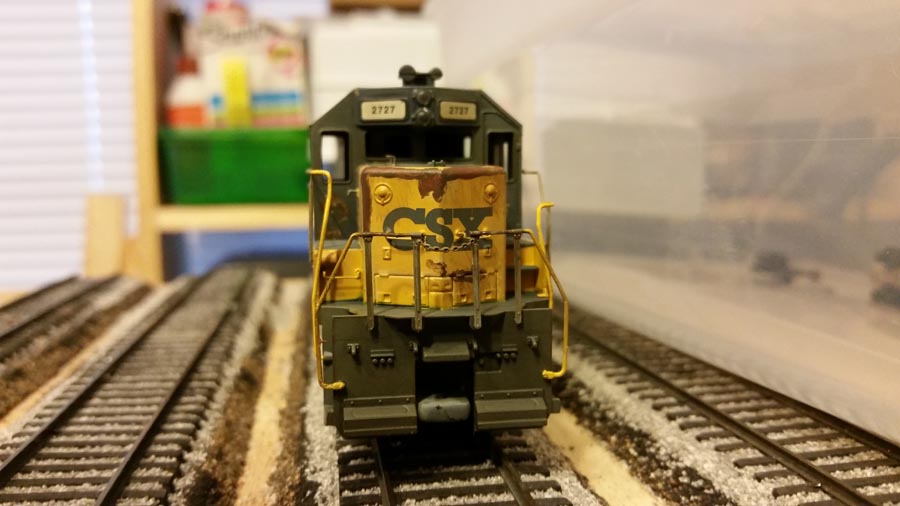

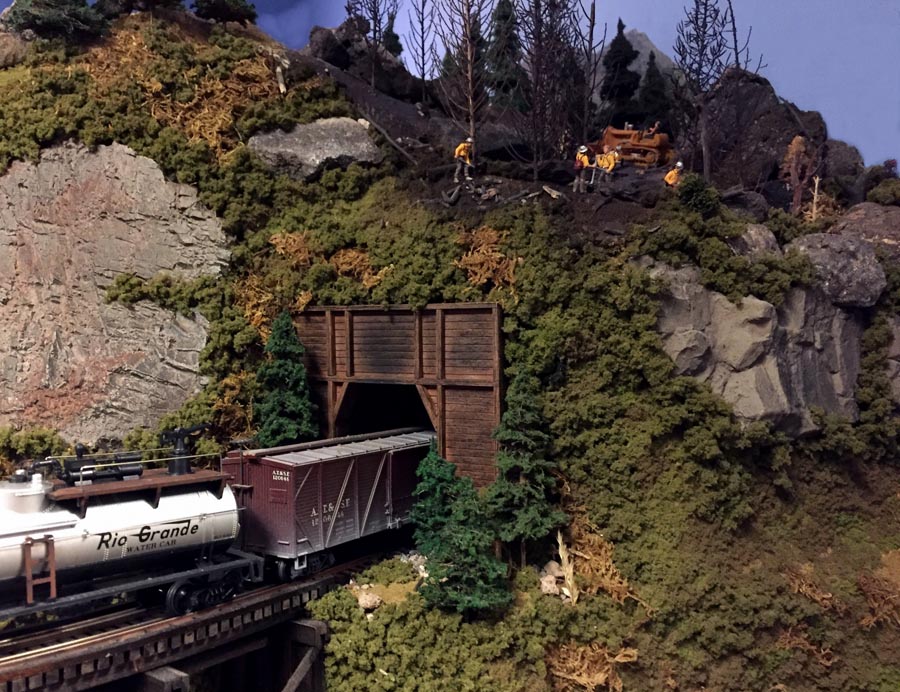
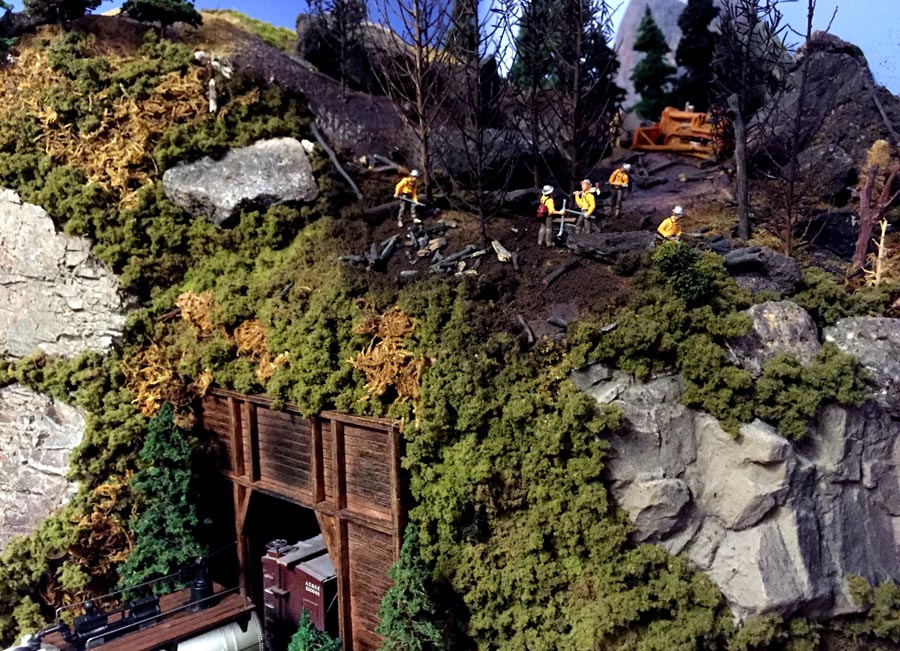
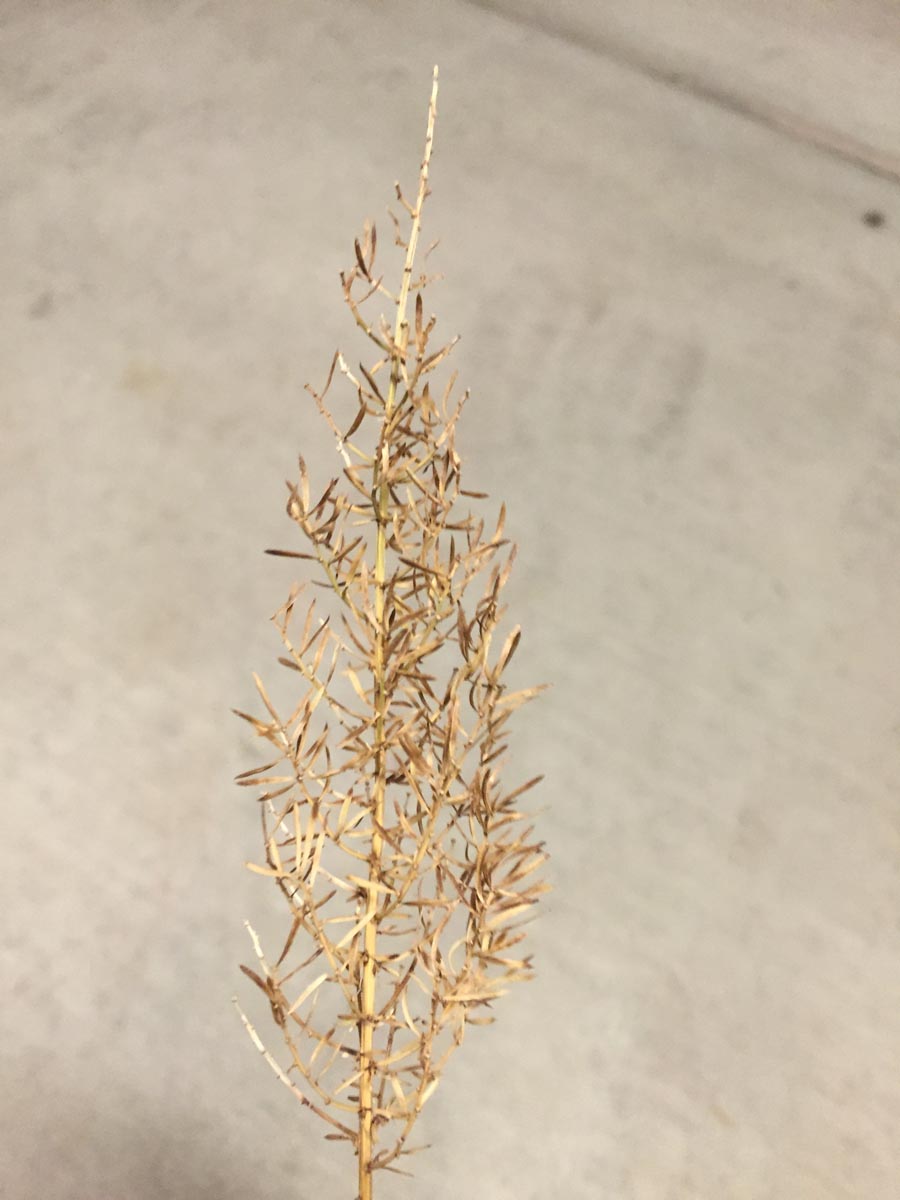
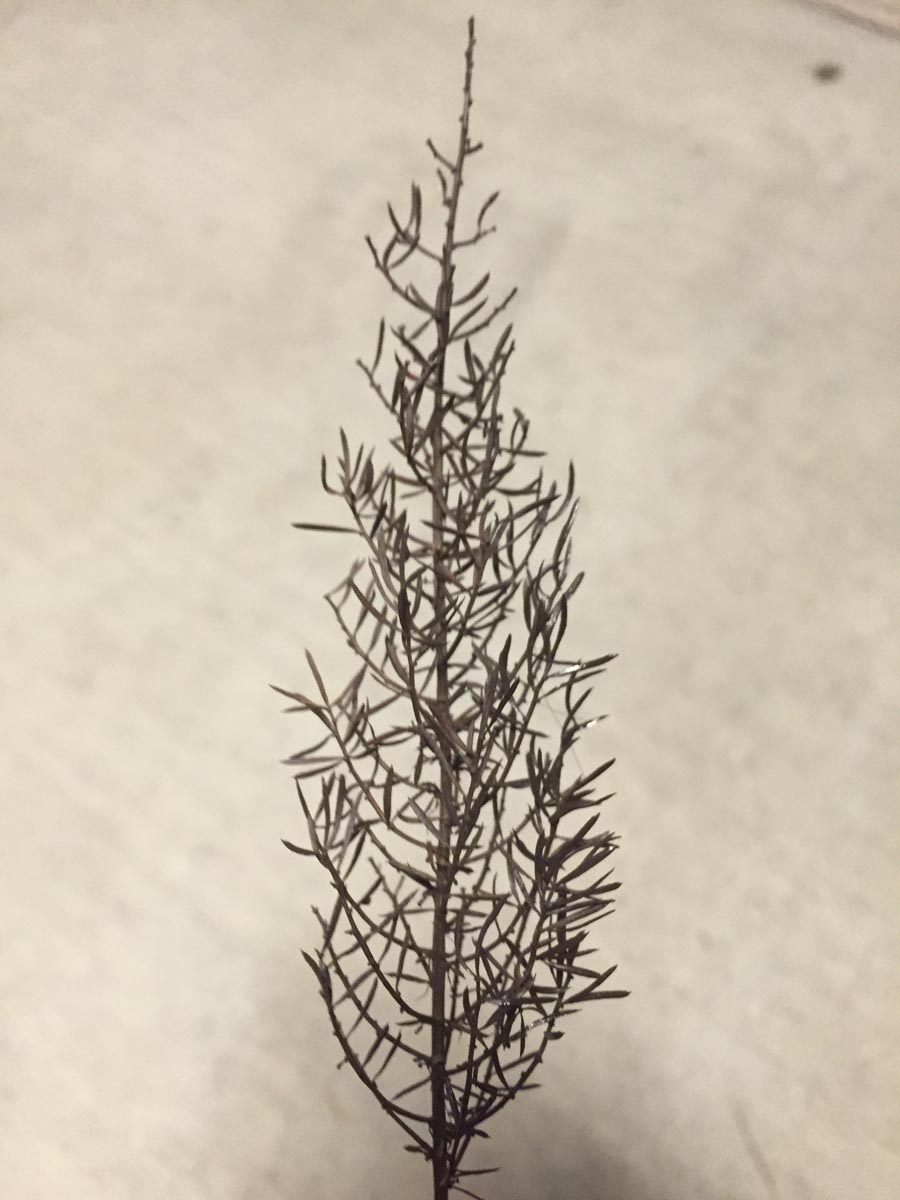

I enjoy looking and reading about all HO train plans and pictures
nice touch above tunnel!!!!!!!!!!!!!!!
nice little fitting tribute to the brave fire fighters
thank god we don’t get fires like that here in england
I like the way you used what you had from your yard. I my self is cutting up an old plastic Xmas tree and making trees and working out great. I have used black roof paper for my roads with painted white and yellow jines so you using what you had from the yard was really good and looks good. GREAT JOB from Dave in Savannah, Ga.
Bobby, Mark, beautiful work. Incredible realism. Talent abounds out there.
Wayne from Pittsburgh.
Small brush fires like this are a regular occurrence in the forested areas of Algoma in Northern Ontario, along the former ACR, the ONR or the CNR/CPR. Not easy to get fire crews into the bush. I really like this ‘realistic’ RR vignette – dave in Ontario
The fade and the smoke damage on the paint is spot on, but the rust I never seen a CSX rusty that Bad. but over all look good
your engine looks great as it has been in service for quite some time keep up the good work ,Chuck .
great job.
Very realistic sceneal almost looks real. Great job, looks good although I’ve never been to the States.
Hi Bobby.That’s a pretty good job on your first weathering job.Im also a beginner at it.Did my first steam loco with coffee and chalk. Keep up the good work.
Great looking fire scene. scenery is well done too.
If you modeled Norfolk Southern you don’t have to weather the engines, they wash them so often they all look new! Southern pride!
Hats off to Mark and Bobby! Great jobs! My tip, especially to new modelers, is that no RR equipment is shinny, even when new, so I spray everything I buy with flat clear. It only takes a few minutes and does not affect more detailed weathering later.
Mark: Your fire area look to real! When the winds shifted, we got a lot of smoke from some of those fires here in San Jose. Seeing what you have built reminds me of the Valley fire. You did a right on job.
Mark, what technique did you use? I’ve never done weathering but it adds to the realism. Good job!
Pete-San Jose
wow the fire scene is brilliant!!
and its so easy to weather things I dont know why folks dont do it more!!
excellent post Alistair and thanks!!
StJohn in Long Beach Cal.
We do indeed sometimes have fires like that, in Wales if not in England. In a really dry summer it’s been known for there to be a spate of fires in the gorse on Caerphilly Mountain, no doubt some little idiot thinks it’s hilarious.
A scene well worth modelling would be when a retained crew from, I believe, Brecon, were called out to a grass fire in Powys and were just congratulating themselves on a job well done when the water pressure died – looking behind them for the first time in a while, they found the fire had sprung up again behind them, encircled the appliance and was just destroying it… oops!
Rod
Love the fire scene. My step-son works with CDF and works with the clean-up crews and this would be great on one of my layouts. Thanks for the wonderful photos…good job on the engine, too.
Hey Bobby. Nice job on the locomotive weathering and thre fire scene and thanks for sharing.
Got a tip for you on your cork road bed, you might know it already but wanted to mention it any way. You can use a sanding block or a small piece of sandpaper to clean up the diagonal profile on your roadbed before you glue it down to give the profile that more prototypacle look. Didn’t know if the area where you took the pictures is visable or not, or just a test track but thought I would mention it.
Mark
Great job with the fire scene, with the southern summer only two months away it is a timely reminder that we have that all ahead of us.
Mark,
Congratulations on your fire scene. It is so realistic.
We have our bushfire problems here in Australia as well. October is approaching. There has been some winter rain, so the bush is fairly green, but that can change in a very short space of time.
For your information there are a number of Australian volunteer firefighters in California, helping your fire crews,
Bruce,
Maitland NSW
Hey, Pete. Thanks for the kind words. My stuff for the fire was simple-brown paint, but I think the really good weathering you’re referring to is on the loco by Bobby so I’ll let him speak to that. I’m really interested in his technique also. That is one GREAT looking loco – I’m impressed! Mark
Great brush fire scene, I think I even smelled smoke. Way cool and well done.
Love the fire scene! Really cool!
Great job weathering that loco!
Hello everyone, like the weathered on everyone’s set and engine. Mark, I like what you did on the mountain with the Fire fighters , what a good spray of flight black would do on your set. And Bobby, love what you did on your GP 38-2. I used to work on GP 40 FDEC.The FEC stands for Florida East Coast. We would bring them in, the engine, and strip them down starting from the long hood to the cab. The trucks would get a cleaning and new metal everywhere else. It was a lot of replacing all the rubber and filters, the long hood would go into the sand blast area and come back with no paint on it. The engine would be stripped down to the block that was so I could get inside and check for cracks. It took about a month to get her back on the high rail and repeat on the next one. To hear her start up after the seven of us worked on her put a smile on our faces. Good luck to everyone and have fun.
Stephen.
Weathering job looks good. For the first time weathering, I must say job well done. Keep up the good work.
Two really good posts of how the details make the layouts much more lively. Well done both Mark and Bobby
The fire scene is well done as is the weathered locomotive.
It is good to copy the prototype when possible or to use reference photos.
As to the comment on Norfolk Southern locomotives and Southern Pride…
Some railways are known for their clean, frequently washed, equipment.
Out west where I have lived, Santa Fe and Union Pacific were known for their very clean locomotives. Southern Pacific was known for locomotives that had rust, paint burns, excess grime, chipped and faded paint, and worse.
Funny that with the BNSF merger, the locomotives began to look more work worn than they had under Santa Fe rule.
When Rio Grande purchased Southern Pacific, the locomotives began to look like they were being cared for — Then Union Pacific purchased RGI and the whole shebang now looks like the filthy Southern Pacific I had grown used to. The cleanest locomotives on the Union Pacific seem to be their steamers now!
Great job. When can you come over to my house and help me?
Mark, Great job on the fire scene! Plus, good advice about tackling small projects to make progress in smaller steps. I wish the “foxtails” we have around here looked as good as yours do. What we call “foxtails” here is also called “Cheat grass” and is not nearly sturdy enough to represent an HO scale tree. Our daughter works as a fire fighter for the forest service, so I may have to steal your idea and add a fire scene to my layout.
Bobby, You did a good job of weathering that GP-38, especially since it was your first attempt at weathering. Personally, I prefer chalk dust and a soft brush for adding light weathering to my locomotives, then finish with a spray of dull coat. What speaker did you install for your sound decoder?
Pretty Neat.!!!!!!!
As I learned from a friend, small scenes on your layout give it personality. When he holds open houses on his layout, he give out sheets to visitors listing all his small scenes and challenging visitors to find them all.
Wow… both posts have some great tips and ideas. Thanks for sharing!
very nice
Very realistic detailed scene, even the black above the tunnel. Great and aTeffordable.
Congratulations to fireman all over the world. In 2017 a massive fire swept through the Garden Route (on the coast of South Africa) and our town, Knysna was the hardest hit with the loss of between 700 to 800 houses plus the loss of lives. The firemen fought tirelessly throughout the day, night and the next day. Helicopters were used to help fight the fires in very strong winds.
I also have a small fire vignette (not finished yet) for my layout as well. A Woodland Scenics abandoned cabin kit is used for it.
Well done Mark on the fire scene and to Bobby for his nicely weathered Diesel locomotive.
Brian – the HOn3 guy in Knysna RSA
The fire scene brought back memories of the loss of 19 Granite Mountain Hotshots who died fighting the Yarnell Hill Wildfire. It was a sad time for us in the Prescott area. If I ever get to build the layout I have in mind I might include some kind of a memorial to them. I got a piece of dust or something in my eyes while writing this.
David Lester
Paulden, AZ
Mark, very nice fire scene, awesome job !!!!
i have done some of these things. its worth it for the outcome. very nice job.
I’ve weathered all my rolling stock but none of my engines. I’m very very worried and afraid that I might ruin such a very expensive and valuable model. So all my engines look like they just came from the factory or retool and paint shop. But I too prefer using powders for weathering. But your engine looks just fine.
Jim AZ
Mark has a brilliant eye for the amount of incredible detail that he included within the vegetation on his hillside. Totally inspirational! My thanks to Mark and Al for the post.